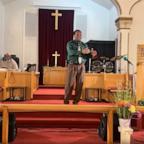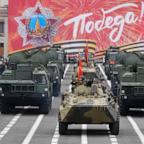'Hidden Treasures' come to light at History.com
— -- History buffs wondering what Lincoln had in his pockets on the day of his assassination or what the original Spider-Man looked like are in luck.
A new Web video series will feature these items among others from the 132 million artifacts housed by the Library of Congress, says Nancy Dubuc, vice president and general manager of History, the network behind The History Channel.
The series is an effort to bring the library's "hidden treasures" into the spotlight, Dubuc says.
This Week's Hidden Treasure made its debut Feb. 11, with quick, upbeat video clips hosted by Library curators who explain each item's significance and history.
"It's a delight to let these (curators) share their passion, share their knowledge and share their stories in order to bring these artifacts to life," Dubuc says.
Boosting the History brand's Web presence doesn't hurt either, she says.
Since the series was launched, History.com has seen its highest trafficked month with 4.7 million visits, says History spokeswoman Becky Auslander. By comparison, February 2008 had 4.3 million visits, she says. (Traffic to the Treasure series has not yet been measured.)
At this early stage, both organizations are scrambling to pick the weekly topics that can be filmed the quickest. With so many artifacts to choose from, Dubuc says they could have a "treasure" each day, but they have to limit it to one a week because of the time it takes to film each episode.
"It's awful," she says. "It's very difficult to weed through. What we are doing is a speed game right now, but we want to do artifacts that people can connect with, that will really resonate with people, but also things that will surprise people."
Treasures new to the site this week include the Gutenberg Bible and an amateur map of the back roads of Princeton, N.J., that helped Washington plan the Battle of Princeton, Auslander says.
The videos will stay up indefinitely in the site's archives.
Some of the artifacts have been "randomly" on display at the Library of Congress, says chief operating officer JoAnn Jenkins, but they have never been explained by curators or available to people outside the Washington, D.C. area.




